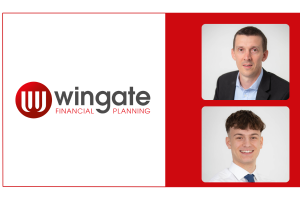I’ll make this relatively brief, siblings – it’s the second last Update before tax year end, the last before the Easter hols and also the last before our end of year so my head is as much full of the various ways I can contribute more to the Exchequer as it is about Update-worthy topics. So full, in fact, that my scholarly essay wot I was going to treat you to about hares, eggs, the goddess Eostre, the Venerable Bede, Ostara, Ostermonat, Pace Egging and all the rest of it will have to wait for next year. You have had a narrow escape.
To business, then, and we have to cover the reanimation of the pensions dashboard(s), with #langcatlive alumnus and (less importantly) Pensions Minister Paul Maynard setting out a written ministerial statement with timelines and all that. The first cohort of biggies in terms of schemes and providers are expected to be all hooked up and live by April next year and all 3,000 schemes will have a year and a half beyond that date. By October 31 2026 we will all be living in Dashboardville.
So the timeline is laid down, and broadly this doesn’t feel like something that a likely change of government later this year will futz with. So the question is: will the industry cope? Now, I’ve hung with the pensions crowd some, and they are party people for sure. They may have to leave off their steady diet of Krug and disco biscuits for a while, as I suspect there is a lot and I do mean a lot of work to do. As ever, we’ll hear from those who are well prepared and feeling shiny, and no doubt there will be some exposing of laggards or ne’er-do-wells.
The limiting factor, more seriously, isn’t necessarily the willingness of the spirit or the flesh. It’s the willingness of the underlying systems to cough up the necessary data, and I think we might see a two-speed market in that regard develop over the next few months.
I’m also interested in the second-order impacts of dashboard. Many of those big schemes expected to go in the first or second waves of implementation are run by the very same big firms that advisers consistently name and shame as being the worst for transfers out. I think we all know if we show everyone all their old schemes they’ll want to consolidate where it’s right to do so, and lots of them will need help, and I’m just saying that if you want to make some cheap money then creating voodoo dolls of consulting actuaries and pension administrators over the next few years looks like a pretty solid business plan.
F****UENCERS
Talking of business plans, spare a thought for finfluencers who are on the naughty step from the regulator. Sadly the term ‘finfluencer’ isn’t; of all the portmanteau words this is one of the worst and if I find out who coined it then there will be an almighty paddlin’.
The shot across the shiny “hi guys, welcome to my channel, mash that like and subscribe button!!!!!!” incubi/succubi’s bows made me think about how people consume information about financial Stuff. If the WASPI saga is anything to go by, it turns out that 3-page close-typed direct mail in brown official envelopes is the sine qua non of communication. Others will suggest that podcasts and video are better. But most soshul meejah watchers will tell you that shorter form content is on the up and half-hour YouTube marathons are over; even the algorithm likes shorts better than it does Proper Content. That’s not going to work for properly nuanced, risk-managed financial content.
Outside of getting the yoof to invest and the sadly continuing march of the crypto bros, I am wondering if the written word might be starting to make a comeback. E-ink not-quite-phones-yet like this are causing a stir – 2-week battery life, folks! – and as life gets busier and busier the fact we can dip in and out of written content so easily compared to video becomes more and more powerful.
The challenge back is that generative AI is infecting written content, and I do think that’s true of landfill copyfarm stuff. But proper stuff, well structured and written, and guaranteed AI-free (like what we do here at the lang cat) feels like it might be going to have a Moment soon.
Hey ho. Turns out it wasn’t such a short Update after all. But at least you didn’t get the Eostre essay.
And your music choice this week? It was so very nearly going to be something fun and frolicsome; I had Peaches by the Presidents Of The United States Of America as an earworm and was going to inflict it on you. But instead our Steve was chatting to an adviser called Lucas (hi Lucas!) who was nice about the Update (thanks Lucas!) but who said he grew out of the music choices when he was a teenager and was all disparaging (boo Lucas!). So, instead you shall now have Marrusorg by Hamferð off their great new record Men Guðs hond er sterk because you certainly didn’t grow out of Faroese doom/death metal, did you Lucas? No you didn’t. So now everyone has to listen to Hamferð because of you, Lucas. Badly done! Badly done!





